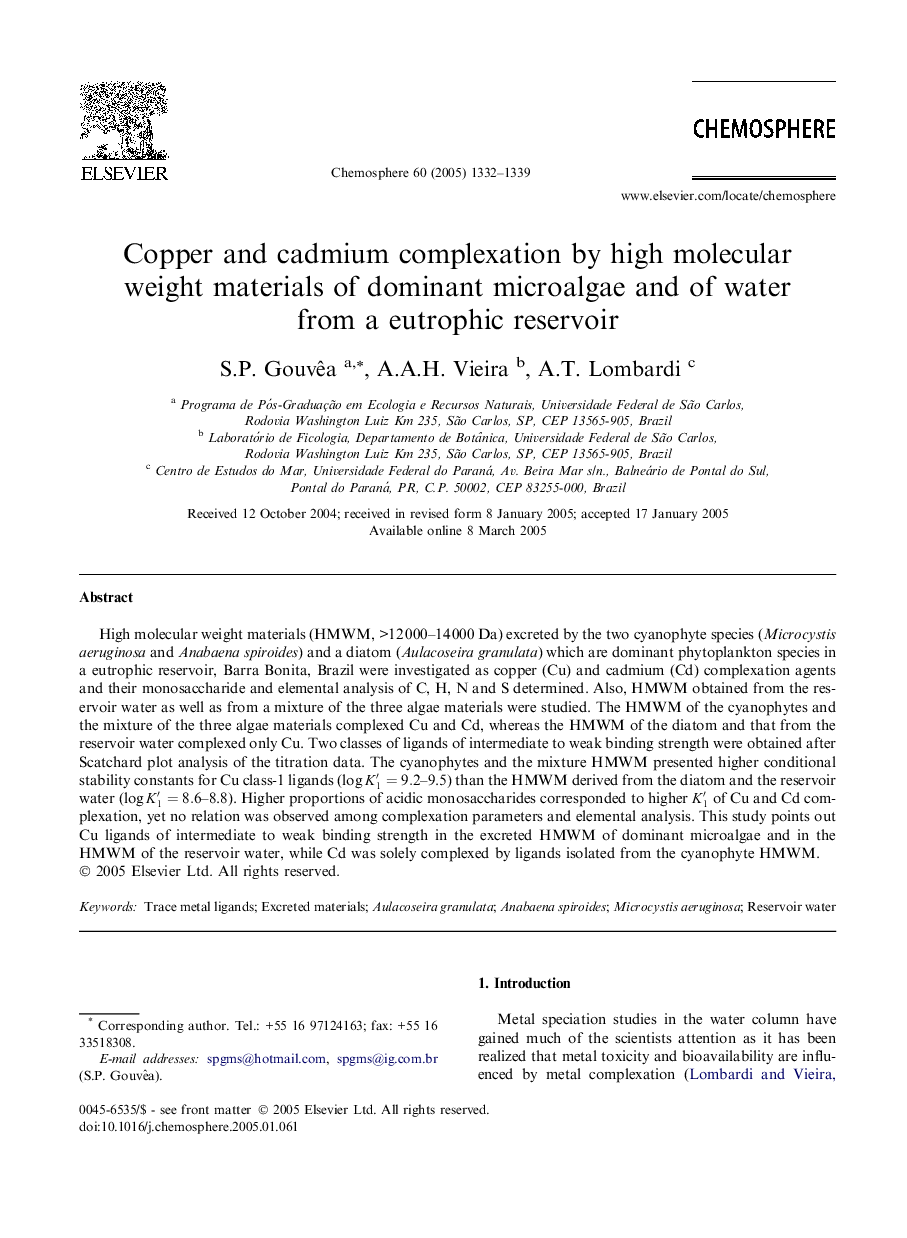| Article ID | Journal | Published Year | Pages | File Type |
|---|---|---|---|---|
| 9451848 | Chemosphere | 2005 | 8 Pages |
Abstract
High molecular weight materials (HMWM, >12Â 000-14Â 000Â Da) excreted by the two cyanophyte species (Microcystis aeruginosa and Anabaena spiroides) and a diatom (Aulacoseira granulata) which are dominant phytoplankton species in a eutrophic reservoir, Barra Bonita, Brazil were investigated as copper (Cu) and cadmium (Cd) complexation agents and their monosaccharide and elemental analysis of C, H, N and S determined. Also, HMWM obtained from the reservoir water as well as from a mixture of the three algae materials were studied. The HMWM of the cyanophytes and the mixture of the three algae materials complexed Cu and Cd, whereas the HMWM of the diatom and that from the reservoir water complexed only Cu. Two classes of ligands of intermediate to weak binding strength were obtained after Scatchard plot analysis of the titration data. The cyanophytes and the mixture HMWM presented higher conditional stability constants for Cu class-1 ligands (logK1â²=9.2-9.5) than the HMWM derived from the diatom and the reservoir water (logK1â²=8.6-8.8). Higher proportions of acidic monosaccharides corresponded to higher K1â² of Cu and Cd complexation, yet no relation was observed among complexation parameters and elemental analysis. This study points out Cu ligands of intermediate to weak binding strength in the excreted HMWM of dominant microalgae and in the HMWM of the reservoir water, while Cd was solely complexed by ligands isolated from the cyanophyte HMWM.
Related Topics
Life Sciences
Environmental Science
Environmental Chemistry
Authors
S.P. Gouvêa, A.A.H. Vieira, A.T. Lombardi,
